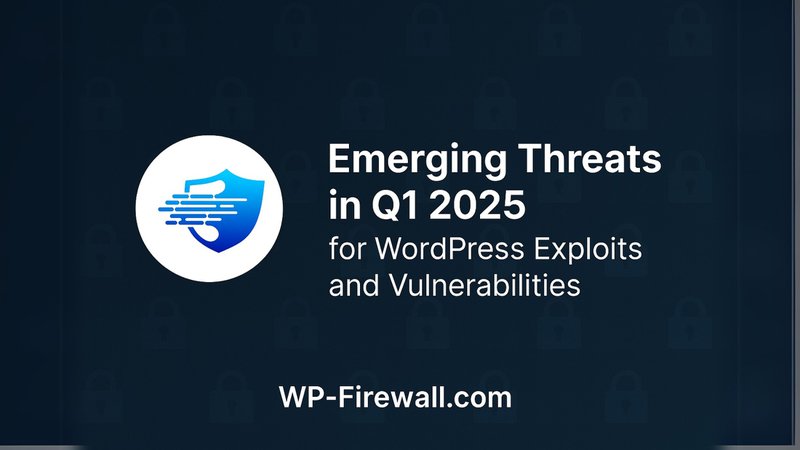
WordPress Under Attack: Q1 2025's Most Dangerous Vulnerabilities & How to Stay Protected
The first quarter of 2025 has witnessed an alarming surge in WordPress security threats, with numerous critical vulnerabilities affecting millions of websites worldwide. As attackers increasingly leverage sophisticated techniques including AI-driven exploits, website owners need comprehensive protection strategies now more than ever. This report examines the most serious WordPress security threats of Q1 2025 and provides expert recommendations for robust protection.
The Evolving WordPress Threat Landscape
WordPress continues to dominate the web ecosystem, powering millions of websites and offering unparalleled flexibility through its extensive plugin and theme ecosystem. However, this same openness makes it a prime target for cybercriminals. Attackers constantly scan for outdated software, unpatched vulnerabilities, and misconfigurations that can be exploited to gain unauthorized access.
The reality is concerning: many WordPress sites remain vulnerable long after security flaws are disclosed, simply because updates are delayed or neglected. According to recent security monitoring, last month alone saw the deployment of over 500 new virtual patches to protect against emerging threats[10]. This highlights a critical truth for website owners—relying solely on developer-issued patches is no longer sufficient in today's threat landscape.
The past quarter has seen a particularly aggressive surge in exploitation attempts. Attackers are leveraging both old and new vulnerabilities, with some security flaws receiving thousands of exploitation attempts within days of disclosure. This pattern suggests an increasingly organized and systematic approach to targeting WordPress installations across the internet.
The Growing Role of AI in WordPress Attacks
One particularly alarming development in 2025 is the increased sophistication of attacks powered by artificial intelligence. Hackers are deploying AI-driven tools that can:
- Scan thousands of websites in seconds to identify vulnerable WordPress installations
- Automatically exploit known vulnerabilities without human intervention
- Bypass traditional security measures with adaptive techniques
- Generate convincing phishing campaigns targeting WordPress administrators
This AI-powered approach makes attacks significantly more scalable and harder to defend against using conventional security measures. Website owners must adopt equally advanced protection mechanisms to counter these evolving threats.
Q1 2025's Most Exploited WordPress Vulnerabilities
The first quarter of 2025 has seen several critical vulnerabilities being actively exploited in the wild. Understanding these threats is the first step toward effective protection.
1. WordPress Automatic Plugin – SQL Injection (CVE-2024-27956)
This critical vulnerability affected a popular plugin with over 40,000 installations and allowed unauthenticated attackers to execute arbitrary SQL queries on the database. The vulnerability existed in the CSV export feature via the "auth" POST parameter.
Security researchers documented more than 6,500 attempts to exploit vulnerable versions of this plugin since the vulnerability was discovered. The threat is particularly severe because it requires no authentication, potentially giving attackers access to sensitive database information including user credentials and personal data.
2. Startklar Elementor Addons – Arbitrary File Upload (CVE-2024-4345)
This critical vulnerability affected the WordPress Startklar Elementor Addons plugin, allowing unauthenticated attackers to upload arbitrary files to the webserver, ultimately leading to complete website compromise.
The vulnerability resided in the plugin's "startklar_drop_zone_upload_process" action, which failed to properly validate uploaded file types. This oversight enabled anyone to upload malicious files, potentially enabling remote code execution. Security monitoring detected several thousand exploitation attempts targeting vulnerable versions of this plugin.
3. Bricks Theme – Remote Code Execution (CVE-2024-25600)
With approximately 30,000 active users, the Bricks theme contained a severe security flaw that allowed unauthenticated users to execute arbitrary PHP code, potentially leading to complete website takeover.
The vulnerability was found in the "prepare_query_vars_from_settings" function, called via the "bricks/v1/render_element" REST route. No proper capability check was implemented, and the plugin's nonce check could be easily bypassed since the nonce was available to anyone accessing the frontend. Hundreds of exploitation attempts have been documented since the vulnerability's disclosure.
4. GiveWP Plugin – PHP Object Injection (CVE-2024-8353)
This critical vulnerability affected a popular donation plugin with over 100,000 installations. The flaw allowed unauthenticated attackers to perform PHP Object Injection attacks due to improper deserialization of multiple parameters during the donation process.
Parameters prefixed by "give_" or "card_" were vulnerable to this attack, which could ultimately lead to complete website compromise. Several hundred exploitation attempts have been recorded, highlighting the active targeting of this vulnerability by malicious actors.
Emerging Critical Vulnerabilities in Q1 2025
Beyond the most actively exploited vulnerabilities, several newly discovered critical flaws demand immediate attention from WordPress website owners.
1. WP Ghost Plugin – Remote Code Execution (CVE-2025-26909)
A particularly severe vulnerability was recently discovered in the popular WordPress security plugin WP Ghost, affecting over 200,000 websites. The vulnerability, tracked as CVE-2025-26909, stems from insufficient input validation within the showFile() function.
Attackers can exploit this flaw by manipulating URL paths to include arbitrary files, potentially leading to remote code execution. With a CVSS severity rating of 9.6, this vulnerability represents one of the most serious threats to WordPress security in recent memory. Website owners using WP Ghost should update immediately to version 5.4.02 or later.
2. Essential Addons for Elementor – Reflected XSS (CVE-2025-24752)
The Essential Addons for Elementor plugin, with over 2 million installations, suffered from a reflected cross-site scripting vulnerability. The flaw occurred due to insufficient validation and sanitization of the popup-selector query argument, allowing malicious values to be reflected back to users.
This vulnerability could potentially be used to steal sensitive information or perform actions on behalf of authenticated users. The issue has been fixed in version 6.0.15, and all users should update immediately.
3. Age Gate Plugin – Local PHP File Inclusion (CVE-2025-2505)
The Age Gate plugin for WordPress, with over 40,000 installations, was found to be vulnerable to Local PHP File Inclusion in all versions up to 3.5.3 via the 'lang' parameter.
This critical vulnerability allows unauthenticated attackers to include and execute arbitrary PHP files on the server, potentially leading to unauthorized code execution, data exfiltration, privilege escalation, and complete server compromise. With a CVSS score of 9.8, this represents an extreme risk to affected websites.
4. HUSKY Products Filter – Local File Inclusion (CVE-2025-1661)
The HUSKY – Products Filter Professional for WooCommerce plugin suffered from a critical Local File Inclusion vulnerability in all versions up to 1.3.6.5. The flaw exists via the template parameter of the woof_text_search AJAX action.
This vulnerability allows unauthenticated attackers to include and execute arbitrary files on the server, potentially leading to bypassing access controls, extracting sensitive data, and even remote code execution under certain conditions. Website owners should update to version 1.3.6.6 or later immediately.
Why Traditional Security Measures Are No Longer Enough
The landscape of WordPress security has fundamentally changed in 2025. Several factors have rendered traditional security approaches insufficient:
The Speed of Exploitation
Modern attackers begin exploiting vulnerabilities within hours or even minutes of discovery. According to security monitoring, last quarter alone saw thousands of exploitation attempts against recently disclosed vulnerabilities. This leaves website owners with an extremely narrow window to implement patches.
The Failure of Generic WAF Solutions
Recent security incidents have exposed significant limitations in generic web application firewalls. During the Bricks theme vulnerability exploitation, "all of the popular WAF solutions used by hosting companies failed to prevent the Bricks attacks".
This failure stemmed from a fundamental limitation: generic WAFs deployed via DNS/CDN lack visibility into WordPress application components, installed plugins, and user authentication status. Without WordPress-specific intelligence, these security solutions cannot effectively protect against targeted WordPress attacks.
Growing Sophistication of Attack Methods
Ransomware and targeted attacks continue to evolve in complexity. According to the GRIT 2025 Ransomware & Cyber Threat Report, financially-motivated cybercriminals remain resilient despite law enforcement disruptions. Initial access vectors for these attacks frequently include credential theft and exploitation of both new and historical vulnerabilities—precisely the weaknesses that plague many WordPress installations.
Comprehensive WordPress Protection Strategy for 2025
Facing these evolved threats requires a multi-layered security approach specifically designed for WordPress environments.
1. Implement WordPress-Specific Security Solutions
Generic security tools are no longer sufficient. Website owners should implement security solutions specifically designed for WordPress that can:
- Monitor WordPress-specific application components
- Track installed plugins and their known vulnerabilities
- Understand WordPress authentication contexts
- Deploy virtual patches to protect against known exploits before official fixes
This approach provides significantly more effective protection than generic security tools that lack WordPress-specific intelligence.
2. Adopt Virtual Patching Technology
Virtual patches neutralize known exploits with precision-crafted firewall rules, protecting websites in real-time and preventing attackers from exploiting unpatched vulnerabilities. Instead of waiting for official fixes, website owners can stay protected against emerging threats.
This technology has proven highly effective—for example, virtual patches blocked over 6,500 exploitation attempts targeting the WordPress Automatic Plugin vulnerability, protecting websites before many owners could implement the official update.
3. Maintain Rigorous Update Practices
While virtual patching provides crucial protection, maintaining regular updates remains essential:
- Enable auto-updates for WordPress core when possible
- Implement a systematic review process for plugin updates
- Regularly audit installed plugins and remove unused ones
- Consider using a staging environment to test updates before deployment
This disciplined approach reduces the overall attack surface and ensures that known vulnerabilities are addressed promptly.
4. Implement Strong Authentication Controls
With credential theft remaining a primary attack vector, strong authentication is non-negotiable:
- Require strong, unique passwords for all user accounts
- Implement two-factor authentication for administrative access
- Limit login attempts to prevent brute force attacks
- Regularly audit user accounts and remove unnecessary access
These measures significantly reduce the risk of unauthorized access through compromised credentials.
Conclusion
The first quarter of 2025 has demonstrated that WordPress security threats continue to evolve in sophistication and impact. The vulnerabilities discussed in this report have affected millions of websites collectively, highlighting the scale of the security challenge facing WordPress website owners.
A strong WordPress security strategy must go beyond routine updates—it requires real-time threat mitigation to stay ahead of attackers. While official patches are necessary, they often arrive after threats have already been exploited. By combining proactive security solutions like WP-Firewall with smart practices like regular updates, monitoring, and minimizing unnecessary plugins, website owners can build a strong, resilient defense against the evolving cyber threats of 2025.
As we progress through 2025, staying informed about emerging vulnerabilities and adapting security strategies accordingly will be crucial for maintaining WordPress website security. With the right approach, WordPress websites can remain secure despite the increasingly sophisticated threat landscape.

